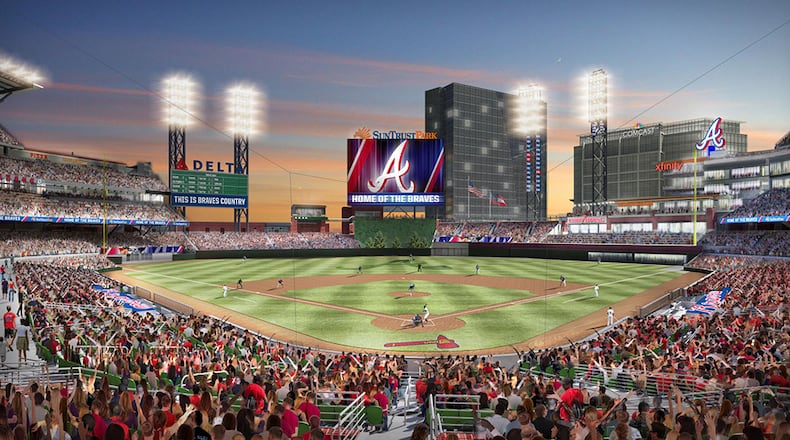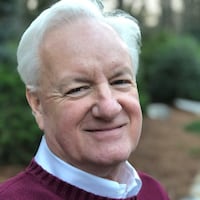At SunTrust Park, batters won’t have to hit the ball as far to right-center field for a home run as they do at Turner Field. But they will have to hit it higher.
The dimensions and wall heights of the Braves’ new stadium, slated to open next year, reflect an outfield designed to have more distinctive characteristics than in the team’s current home.
A key difference will be the outfield wall, which is a consistent eight feet, four inches high all the way around at Turner Field but will be lower and higher at SunTrust Park.
According to an architectural rendering and confirmed this week by Braves officials, the plan is for the SunTrust Park wall to be only six feet high at the left-field foul pole; eight feet, eight inches high in left-center and center field; and 16 feet high in right field, including at the right-field foul pole.
The right-field wall — almost twice as high as at Turner Field — will be balanced by a shorter distance from home plate. At Turner Field, the right-center power-alley fence is 390 feet from the plate. At SunTrust Park, it will be 375 feet away.
Other planned outfield dimensions at the new Cobb County stadium include 335 feet down the left-field line (same as Turner Field), 385 feet to left-center field (compared with 380 feet at Turner), 400 feet to straight-away center field (same as at Turner) and 325 feet down the right-field line (compared with 330 at Turner).
At its deepest points, immediately to the left and right of straight-away center field, the SunTrust Park wall will be 402 feet from the plate.
Braves general manager John Coppolella, asked on a recent Twitter chat with fans how he expects the new ballpark to play, answered: “We have studied wind patterns, and we think it will be similar to Turner Field, but slightly better for hitters.”
The angles and varying heights of the SunTrust Park wall were designed to give the outfield “character and personality and uniqueness,” said Derek Schiller, Braves executive vice president of sales and marketing.
“It’s something that quite frankly we lacked at Turner Field,” he said.
Schiller said the Braves were guided by the study of wind in the area, including data collected at nearby Dobbins Air Reserve Base.
“It helped us determine where to place those walls,” he said.
About the Author
Keep Reading
The Latest
Featured


